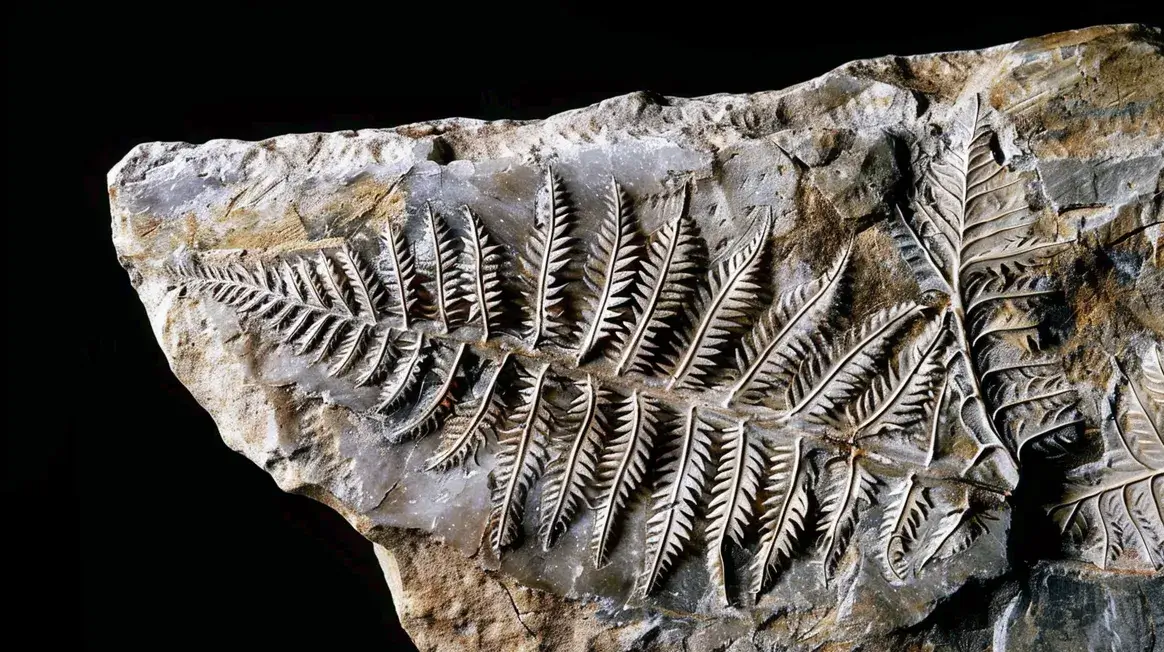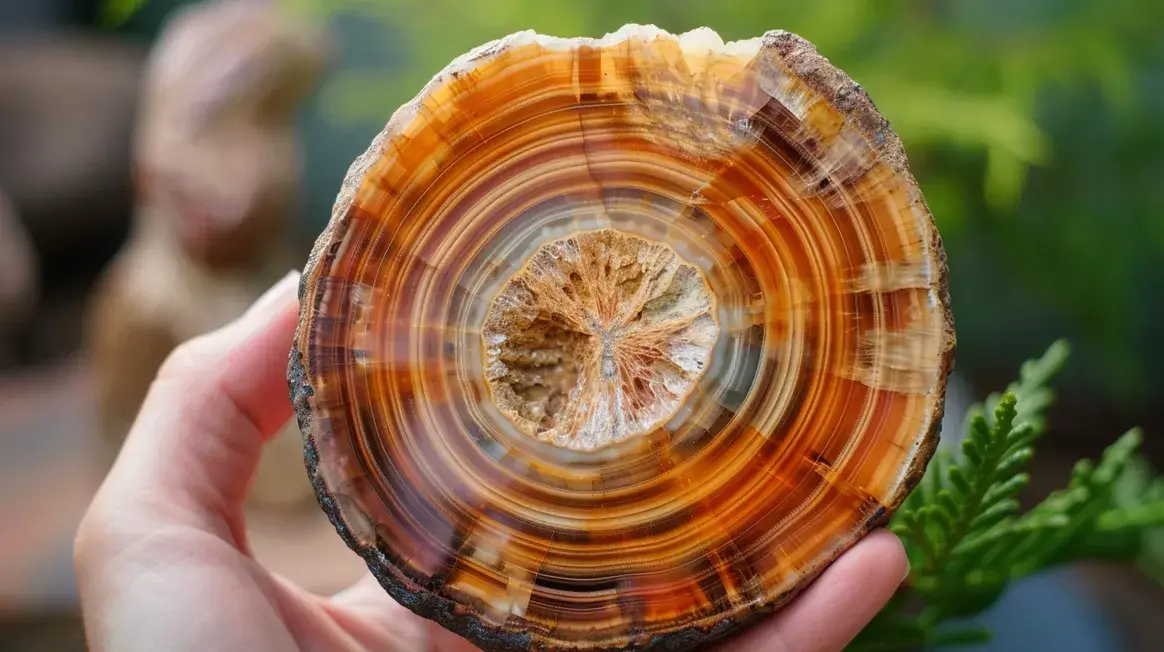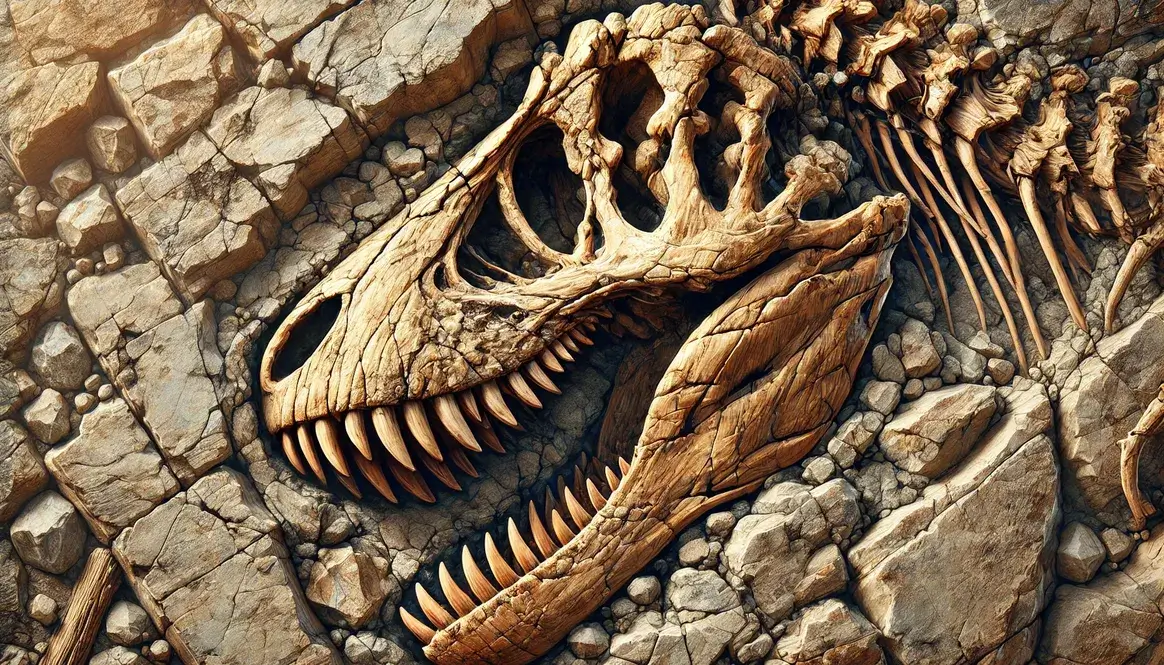Did you know that some of the best fossils aren’t made of bone at all? They’re empty spaces in rock! These spaces, called fossil molds, form when animals or plants leave perfect impressions in mud or sand that later turns to stone. Just like making shapes in play dough, but on a much bigger scale and over millions of years. Let’s explore how do fossil molds form and why they’re some of the most exciting discoveries paleontologists can make.
| Key Facts About Fossil Molds | What You Need to Know |
|---|---|
| Formation Time | Days to millions of years |
| Main Types | External molds (outside impression), Internal molds (inside impression) |
| Best Conditions | Quick burial in fine sediment |
| Common Locations | Sedimentary rock layers, riverbeds, lakebeds |
| What They Show | Body shapes, skin textures, shell patterns |
What Makes Fossil Molds Special?
Fossil molds are like nature’s stamps in rock. When an animal or plant gets buried, it can leave behind a perfect impression of its shape in the surrounding sediment. These impressions become permanent marks in stone, giving scientists clear pictures of what ancient creatures looked like.
Think of fossil molds as the opposite of most other fossils. While many fossils are the actual remains of creatures turned to stone through petrified fossils, molds are empty spaces showing the exact shape of the original organism. It’s similar to pressing a toy into clay – when you remove the toy, you see its shape perfectly preserved in the clay.
These special fossils help scientists in unique ways. They show details that other fossils might miss, like:
- Skin patterns
- Scale arrangements
- Shell textures
- Body shapes
- Size measurements
The best part about fossil molds? They can form in situations where regular fossilization isn’t possible. This means they fill important gaps in our knowledge about prehistoric life. When scientists find a good fossil mold, they can learn things about dinosaurs and other ancient creatures that bones alone can’t tell them.
How Do Fossil Molds Form?
The formation of fossil molds starts when an organism dies and gets buried quickly. Unlike different types of fossils that preserve the actual remains, molds capture shapes and textures in the surrounding material. This process can happen to any plant or animal part, creating detailed impressions that last millions of years.
| Formation Step | What Happens | Best Conditions |
|---|---|---|
| Initial Burial | Organism covered by sediment | Fine sand or mud |
| Preservation | Shape gets pressed into sediment | Minimal disturbance |
| Decomposition | Original material disappears | Wet environment |
| Hardening | Sediment turns to rock | Steady pressure |
Step 1: Death and Burial
The process begins when a creature dies. For a fossil mold to form, the organism needs quick burial – often within days or weeks. This is different from petrified fossil formation, which can take much longer.
The best types of sediment for making molds are:
Fine-Grained Materials:
- Silt
- Clay
- Fine sand
- Volcanic ash
These materials work well because they can capture tiny details. Coarse sand or gravel doesn’t work as well because the pieces are too big to show fine features.
Most fossil molds form in places where sediment builds up quickly:
- Lake bottoms
- River beds
- Ocean floors
- Flood plains
The sediment needs to be wet when it covers the organism. This helps it stick together and hold the shape better. It’s like making a sandcastle with damp sand instead of dry sand – the wet sand holds its shape much better!
Step 2: Soft Parts Break Down
After burial comes a fascinating process where nature starts recycling the original organism. Soft tissues like muscles, organs, and skin start to decompose first. This might sound gross, but it’s a key part of how fossil molds form!
The speed of decomposition depends on several factors:
Temperature
- Warm = faster breakdown
- Cold = slower breakdown
Oxygen Levels
- More oxygen = faster breakdown
- Less oxygen = slower breakdown
Water Presence
- Wet conditions speed up the process
- Dry conditions slow it down
While this decomposition happens, something amazing occurs. Even as the body fossils disappear, their shapes stay preserved in the surrounding sediment. Think about pressing your hand into wet cement – even after you remove your hand, the shape stays perfect.
The impression remains because the sediment around the organism has already started to harden. It’s like making a chocolate mold – once the chocolate sets, you can remove the original shape, and the impression stays exactly the same.
This stage is crucial because it creates the empty space that will become the fossil mold. Different parts of the organism break down at different rates, which can actually help create more detailed impressions. For example, when skin decomposes slowly, it can leave amazing textural details in the surrounding sediment before it fully disappears.
Step 3: Hardening of Sediment
The most amazing part of mold formation happens when soft sediment slowly turns into solid rock. This process, called lithification, works like nature’s cement. Water carrying minerals seeps through the sediment, filling tiny spaces between sand or mud particles. These minerals act like glue, sticking everything together.
| Mineral Type | How It Helps | Result |
|---|---|---|
| Silica | Creates strong bonds | Very hard rock |
| Calcite | Fills tiny spaces | Detailed preservation |
| Iron compounds | Adds strength | Reddish color |
Unlike carbon fossil creation, where the original material gets replaced, the sediment around the organism simply gets harder and harder. The pressure from layers above helps this process by squeezing the particles closer together.
The shape stays preserved because:
- Minerals fill all the tiny spaces
- Pressure keeps the impression stable
- The hardening happens before the shape can be damaged
It’s similar to making a plaster cast – once the plaster sets, the shape won’t change. But in nature, this process takes much longer and creates much stronger results. The sediment becomes so hard that these shapes can last millions of years!
Step 4: Empty Space Creation
In the final step of mold formation, all traces of the original organism vanish completely. What’s left behind is a perfect hollow shape in the rock. This empty space is different from preserved amber fossils, where the original material stays trapped. Instead, the space itself becomes the fossil!
How the Empty Space Forms:
Original Organism → Decomposition → Minerals Fill Gaps → Empty Space Left BehindThink of it like making a sand sculpture at the beach. If you press a seashell into wet sand and carefully remove it, you’ll see every ridge and bump of the shell as a hollow shape. Now imagine that happening deep underground, but instead of sand staying loose, it turns to stone.
The empty space keeps its shape because:
- The surrounding rock is now completely hard
- The original shape got locked in before decomposition finished
- Minerals support the tiny details of the impression
Sometimes, these spaces fill up with newer sediment or minerals, creating what scientists call a cast. But even when they stay empty, these spaces tell us so much about ancient life. Each bump, groove, and texture in the mold shows exactly what the original animal or plant looked like.
Different Types of Fossil Molds
Not all fossil molds form in the same way. The type of mold that forms depends on which part of the organism leaves its mark in the rock. These different types help scientists learn various things about ancient life.
External Molds
External molds show us what the outside of an organism looked like. They’re like a negative photo of the original animal or plant – every bump and groove appears just as it was millions of years ago. Scientists often find these alongside ancient dinosaur tracks, giving them excellent information about what dinosaurs looked like.
Some amazing examples of external molds include:
Skin Impressions
- Scales from duck-billed dinosaurs
- Bumpy skin from armored dinosaurs
- Feather patterns from small dinosaurs
Shell Patterns
Original Shell → Detailed Impression → External Mold
-------------------------------------------------
Shows: * Growth lines
* Surface textures
* Size and shapeThe most exciting external molds come from places where conditions were just right for preservation. For example, scientists have found external molds that show:
- Complete dinosaur feet with scale patterns
- Full body outlines of small dinosaurs
- Detailed leaf shapes from ancient plants
These molds are extra special because they can sometimes reveal colors and patterns that would be lost in other types of fossils. When scientists find a good external mold, they can make copies of it to study the original animal’s features in detail.
Internal Molds
Internal molds form inside hollow structures like shells, bones, or skulls. Unlike external molds that show the outside, these molds reveal what the inside looked like. When scientists find these alongside dinosaur stomach stones, they get a complete picture of both the inside and outside of ancient creatures.
| Feature | External Molds | Internal Molds |
|---|---|---|
| What They Show | Outside surfaces | Inside structures |
| Common Parts Found | Skin, scales, shells | Brain cases, shells, bones |
| Best Formation Sites | Muddy lake beds | Ocean sediments |
| Study Value | External anatomy | Internal anatomy |
Scientists have found some fascinating internal molds, including:
Brain Cases Brain cases show the shape and size of dinosaur brains. These special molds form when sediment fills a skull before it breaks down.
Body Cavities Sometimes, sediment fills the inside of a dinosaur’s chest or belly area. This helps scientists learn about:
- Internal organ placement
- Body cavity size
- Growth patterns
Shell Interiors Many internal molds come from ancient shells. These show:
- Growth rings
- Muscle attachment points
- Internal chambers
These molds are particularly valuable because they reveal details about how ancient animals’ bodies worked from the inside out. Each new discovery helps build a more complete picture of prehistoric life.
Molds vs. Casts: What’s Different?
Many people mix up molds and casts, but they’re actually quite different! Much like scientists study tiny ancient remains for clues about the past, both molds and casts offer unique information about prehistoric life.
Think about making cookies:
- A mold is like the empty shape in the cookie dough after you remove the cookie cutter
- A cast is like pouring plaster into that empty shape to make a copy
Here’s a simple breakdown:
Fossil Molds:
- Empty spaces in rock
- Show the original shape as a hollow impression
- Form naturally when organisms decay
Fossil Casts:
- Solid pieces of rock
- Fill in the empty mold spaces
- Can form naturally or be made by scientists
| Feature | Molds | Casts |
|---|---|---|
| Material | Empty space | Filled with minerals |
| Surface Details | Negative impression | Positive copy |
| What You See | Reversed details | Original-looking details |
| How It Forms | Original decay | Mold fills with sediment |
Scientists value both types because:
- Molds show exact surface details
- Casts help visualize the actual animal
- Together, they tell a complete story
- Some features show up better in one than the other
When scientists find a good mold, they often make their own casts. This helps them:
- Study the fossil without damaging it
- Share copies with other scientists
- Make museum displays
- Test ideas about how the animal looked
Famous Dinosaur Mold Fossils
When groups of fossils are found together, they sometimes include amazing mold specimens. These special finds have taught us so much about how dinosaurs really looked!
Skin Impressions
Some of the most exciting mold fossils show dinosaur skin patterns. One famous example comes from a duck-billed dinosaur found in Montana. This mold shows skin so detailed you can see individual scales – each one smaller than a pencil eraser!
Amazing Skin Mold Discoveries:
| Location | Dinosaur Type | What We Learned |
|---|---|---|
| Montana, USA | Duck-bill | Scale patterns |
| Germany | Small raptor | Feather layout |
| Argentina | Long-neck | Skin texture |
These skin impressions taught scientists that:
- Many dinosaurs had different skin patterns on different body parts
- Some had larger scales along their backs
- Others had tiny scales on their bellies
- Several had special patterns around their joints
Footprint Molds
The most common mold fossils are footprints. These special tracks work like time machines, showing us exactly how dinosaurs moved. When scientists find molecular fossil remains near footprint sites, they can learn even more about ancient environments.
Footprint molds tell us:
- How fast dinosaurs walked or ran
- Whether they traveled alone or in groups
- If they dragged their tails
- How they balanced their weight
One special set of footprint molds from Texas shows hundreds of tracks from different dinosaurs. These prints tell us these dinosaurs:
- Walked together in groups
- Had adults and babies
- Followed regular paths
- Visited the same places often
Finding Fossil Molds
The best places to find fossil molds are where sediments built up quickly in the past. Like partially preserved remains, molds often form in specific environments that protect them over time.
Best Locations for Fossil Molds:
- Old lake beds
- Ancient river banks
- Dried seabeds
- Quarries
- Cliff faces
When looking for fossil molds, keep an eye out for:
| Feature | What It Means |
|---|---|
| Split rocks | Might contain impressions |
| Smooth depressions | Possible body prints |
| Regular patterns | Could be scale impressions |
| Round hollows | Potential shell molds |
Many museums have special collections of local fossil molds. These help scientists study prehistoric life from that area. The molds often sit alongside time-marking fossils to show how old they are.
Your Window to Prehistoric Life
Fossil molds give us an amazing peek into the past. Each hollow space in rock tells a story about an ancient animal or plant. From tiny shell impressions to massive dinosaur prints, these natural sculptures help us understand what lived on Earth millions of years ago. By studying these impressions, scientists keep discovering new things about prehistoric life. Every new fossil mold found adds another piece to this fascinating puzzle from the past.





